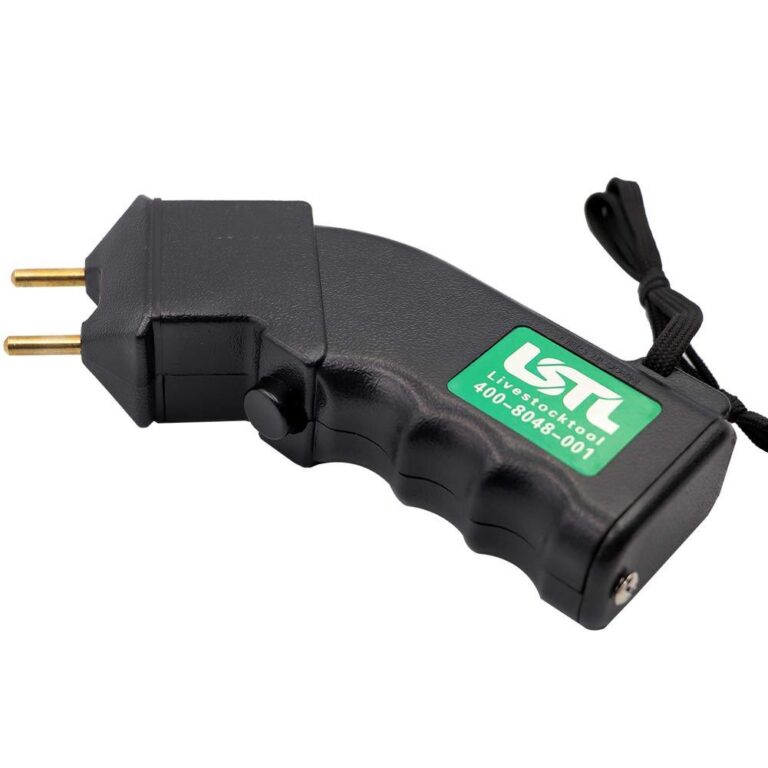Table of Contents
- Understanding the Effects of Stun Guns on Different Animal Species
- Legal Considerations and Ethical Implications of Using Stun Guns on Animals
- Safety Precautions and Best Practices for Using Stun Guns Responsibly
- Alternatives to Stun Guns for Humane Animal Control
- Final Thoughts
Understanding the Effects of Stun Guns on Different Animal Species
When it comes to the use of stun guns on animals, the effectiveness and safety vary widely depending on the species and their unique physiology. For instance, smaller animals with less muscle mass may experience a more intense electrical shock, increasing the risk of serious injury or death. In contrast, larger animals often have thicker skin and more complex nervous systems, which can reduce the stun gun’s effectiveness but also complicate its safe use. The key concern lies in the animal’s cardiac and nervous system response-the electrical current can disrupt normal heart rhythms or cause nerve damage, especially in species with sensitive or thin skin.
It’s important to consider these factors before deploying a stun device on any animal. Here are some critical points to keep in mind:
- Species sensitivity: Birds and reptiles tend to be more vulnerable to electrical shock compared to mammals.
- Animal size and muscle composition: Affects how the electrical current passes through the body.
- Health status: Animals with pre-existing conditions may experience amplified adverse effects.
- Intended use and duration: Prolonged exposure increases risk of permanent damage.
Legal Considerations and Ethical Implications of Using Stun Guns on Animals
When considering the use of stun guns on animals, it’s crucial to recognize the complexity of legal regulations surrounding this topic. Many jurisdictions have strict laws regarding the use of electric shock devices on animals, often categorizing improper use as animal cruelty or abuse. For instance, some regions require explicit permits, while others may ban stun guns entirely for animal control purposes. Understanding and complying with these laws is essential to avoid legal consequences, which can range from fines to criminal charges. Before proceeding, always check local and national legislation and consult animal welfare organizations or legal experts.
Aside from legal boundaries, the ethical implications cannot be overstated. Using a stun gun on an animal raises serious concerns about the animal’s welfare and potential suffering. Ethical considerations should focus on the device’s intended purpose, the animal’s species and size, and whether less harmful alternatives have been explored. Responsible use demands an emphasis on minimizing pain and stress, ensuring that stun guns are not employed as a means of punishment or convenience but strictly for legitimate self-defense or justified animal control scenarios. Key ethical guidelines include:
- Respect the animal’s well-being and prioritize humane treatment.
- Use stun guns only as a last resort, after other non-violent methods fail.
- Ensure proper training and knowledge before applying such devices.
- Continuously reassess the necessity and impact of using a stun gun on an animal.
Safety Precautions and Best Practices for Using Stun Guns Responsibly
When using stun guns, especially around animals, it is crucial to prioritize safety and responsibility. Always familiarize yourself with local laws and regulations regarding stun gun usage, as unlawful use can result in serious legal consequences. Before deploying any device, ensure that the stun gun is maintained in good working condition and tested regularly under safe conditions. Never aim for the head, neck, or sensitive areas of an animal to avoid causing unnecessary harm or permanent injury. Instead, focus on deterring aggressive behavior by targeting larger muscle groups or controlling the animal with non-lethal force alternatives first.
Adhering to best practices can significantly decrease risks for both the user and the animal. Here are essential safety tips to keep in mind:
- Use minimal necessary force: Activate the stun gun briefly and only for the duration needed to deter aggression.
- Be aware of your surroundings: Ensure the area is secure to prevent accidental contact with bystanders or unintended animals.
- Combine with other safety tools: Carry leashes, barriers, or repellents to manage situations non-violently whenever possible.
- Seek professional guidance: If unsure, consult animal behaviorists or law enforcement experts on responsible use in animal encounters.
Alternatives to Stun Guns for Humane Animal Control
When seeking options that ensure the safety and well-being of animals while maintaining effective control, several alternatives stand out for their humane approach. Ultrasonic devices emit high-frequency sounds that are disruptive to animals but inaudible to humans, encouraging them to move away without causing physical harm. Additionally, spray deterrents – including citronella and other non-toxic compounds – can temporarily discourage aggressive behavior by targeting animals’ sensitive olfactory systems without inflicting pain or injury.
Beyond technology, behavioral techniques often prove highly effective. For instance, leash training and positive reinforcement help manage animals by addressing underlying causes of aggression or fear, promoting safer interactions. Physical barriers such as portable fencing or strategic environmental modification also reduce the need for forceful interventions. Employing a combination of these methods not only prioritizes the animal’s well-being but fosters long-term harmony between humans and animals.
- Ultrasonic deterrents for non-invasive crowd control
- Citronella and scent-based sprays for temporary behavioral modification
- Leash and obedience training to prevent aggression
- Physical barriers and environmental adjustments for safe separation
Final Thoughts
In summary, while stun guns may seem like a quick solution for handling animals, their use carries significant risks and ethical considerations. Understanding how these devices work, the potential harm they can cause, and the legal implications is essential before deciding to use one. Always prioritize humane and safe methods when interacting with animals, and consult professionals if you find yourself in a difficult situation. Staying informed and acting responsibly not only protects animals but also ensures your own safety and peace of mind.Check Our Other Blogs
- StunGun – Your Trusted Source for Stun Guns, Laws, and Self-Defense Tips
- PepperSprayLaws – Your Trusted Resource for Pepper Spray Information
- StunGunLaws – Your Trusted Guide to Stun Gun Legality and Safety



